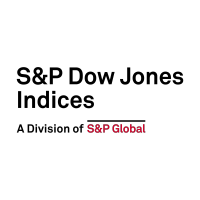Tag Archives: Equity
Using the News to Select a More Stable Path to the S&P 500
Meet the S&P 500 RavenPack AI Index, a multi-asset index that applies a news analytics algorithm powered by RavenPack to select S&P 500 sectors with the strongest news sentiment for use in its sector rotation process. The index combines U.S. equities and fixed income, complemented by a daily risk control mechanism that seeks to maintain…
- Categories Multi-Asset
- Other Tags
- Categories
- Multi-Asset
- Other Tags
S&P/ASX All Technology Index Boosted by Tech Turnaround
Following a poor 2022, the Information Technology sector has proven itself to be the outstanding performer in Australian equities in 2023. Despite rising interest rates, higher bond yields and weakening consumer confidence, market participants have still seen value in the Tech sector thus far in 2023. Tech’s turnaround has benefited the S&P/ASX All Technology Index,…
- Categories Equities
- Other Tags
Towering Tech
The performance of large-cap Technology stocks so far this year has been exceptional, with the S&P 500® Information Technology sector outperforming the S&P 500 by 26% over the six-month period ending June 30, 2023—the 97th percentile of all observations in our database. Tech’s outperformance, driven by mega-cap strength, has been especially notable because of its…
- Categories Equities
- Other Tags
SPIVA Canada Scorecard 2022: Country, Currency and Concentration Contexts
Since 2004, our SPIVA® Canada Scorecards have shown that a majority of actively managed Canadian equity funds typically underperform the S&P/TSX Composite Index. However, according to the recently published SPIVA Canada Year-End 2022 Scorecard, the annual underperformance rate dropped to the best result we have seen since 2015: just 52% of Canadian Equity managers lagged…
- Categories Equities
- Other Tags
Active Ability versus Active Outperformance
Some commentators have argued that today’s market environment—characterized by rising rates and economic growth concerns—is a ripe environment for stock pickers. This argument is conditionally correct, as long as we remember that having the opportunity to add value does not guarantee that value gets added. In today’s environment, active managers have good potential to add…
- Categories Equities
- Other Tags
- Categories
- Equities
- Other Tags
Examining Tactical Approaches to Sectors
Why does sector dispersion matter and how can it inform tactical approaches to sectors? S&P DJI’s Elizabeth Bebb and Invesco’s András Vig explore how sector dispersion can impact long-term asset allocations.
- Categories Equities
- Other Tags
SPIVA Institutional and the Pharaohs of Finance
Ptolemy I (367 BC-282 BC), one-time companion of Alexander the Great and later pharaoh of Egypt, has an important role in intellectual history. Among other contributions, he is credited with founding the library at Alexandria, one of the seven wonders of the ancient world, and for personally sponsoring the work of Euclid, a mathematician whose…
- Categories Equities
- Other Tags
- Categories
- Equities
- Other Tags
S&P U.S. Core Indices Mid-Year 2022: Analyzing Relative Returns to Russell
In Q2 2022, the S&P 500®, S&P MidCap 400® and S&P SmallCap 600® all fell about 15%, continuing the declines from Q1 as of June 30, 2022 (see Exhibit 1). The S&P 500 experienced its worst first half since 1970. Amid the challenging environment, the S&P U.S. Core and Style Indices have generally proved more…
- Categories Equities, S&P 500 & DJIA
- Other Tags
- Categories
- Equities, S&P 500 & DJIA
- Other Tags
S&P 500 GARP Index: Growth at a Reasonable Price Anyone?
While growth stocks have the potential to grow at a rate significantly above the market, they have faltered during 2022 on the back of high inflation and rising interest rates. For market participants toying with the idea of when and how to get back in, the S&P 500® GARP (Growth at a Reasonable Price) Index…
- Categories Equities
- Other Tags
- Categories
- Equities
- Other Tags
Defensive Dynamics
2022 has been a tumultuous year characterized by reversals, with the S&P 500® down 20% in the first six months of the year and rebounding by 9% in July. In this uncertain environment, seeking defensive exposures via sectors could mitigate portfolio risk, but a nuanced perspective may be required to understand which sectors offer the…
- Categories Equities
- Other Tags














































